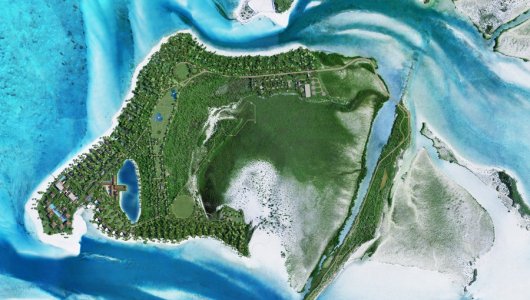Robert Rippee, CEO of FORMO marketing strategy and implementation firm, shares his thoughts on resort real estate and hotel development and suggests that the combination may not as be as profitable as it is initially attractive.

Robert Rippee, CEO of FORMO marketing strategy and implementation firm, shares his thoughts on resort real estate and hotel development and suggests that the combination may not as be as profitable as it is initially attractive.
Robert Rippee, CEO of FORMO marketing strategy and implementation firm, shares his thoughts on resort real estate and hotel development and suggests that the combination may not as be as profitable as it is initially attractive.
One of the defining trends of the last decade was the resort real estate & hotel development. From all perspectives it made sense, a real estate product that would provide a faster return to the developer than the resort hotel combined with an operating luxury hotel with its long play and consistent cash flow. Theoretically, a sound idea. And with abundant mortgage deals and a growing affluent or pseudo-affluent segment, an easy sell.
Not so easy, anymore.
1. Luxury resort hotel marketing is based on the hotels market segmentation: leisure travelers, business travelers and group or convention business. A luxury hotel can create an optimal balance of these different segments in order to maximize revenues. The marketing is then a target-based strategy to match supply to demand in each segment for the hotel. Occupancy, ADR (average daily rate) and REVPAR (revenue per available room) are the standard industry performance metrics of any hotel.
2. Successful resort real estate marketing is based on niche targeting of specific lifestyle and other psychographic variables of individuals, couples and families. The goal is to match the lifestyle defined by the brand with the personal taste and preferences of each niche. [NOTE: There are for all practical purposes no speculative real estate investors in the US today.]
3. The resort real estate sales model continues to focus on traditional broker-led, opportunity sales approach, i.e. a sales prospect walks in the door. The problem is nobody is walking in the door while the inventory of luxury resort real estate property is so large that the noise overwhelms the few prospects that exist.
“ Billions in high quality resort real estate remains unsold today with luxury resort developments swimming in debt ”
Diagnosis: Targeting hotel customers does not equal targeting real estate prospects. It is generally ineffective.
Symptom: Hotel business but no sales. In other words plenty of convention badges in the hotel but no prospects to buy the real estate.
Treatment: Employ hybrid “long tail” marketing strategies that target specific niche or clusters as hotel leisure guests. The targeted niches are selected based upon lifestyle match with the potential real estate product. Secondarily, real estate prospects are targeted with a lifestyle match and the resort hotel is used as part of the real estate sales pipeline. Thirdly, blow-up the traditional concept of the real estate sales model in favor of innovative new solutions.
A very good friend of mine and an expert in resort real estate sales likened it to the cardiac patient in need of emergency open heart surgery yet most hotel operators continue to feed the patient aspirin. His point is well made, these resort & real estate developments amassed hundreds of millions in debt financing based on assumptions of high hotel REVPAR and cash flow with steady real estate sales only to have neither.
Billions in high quality resort real estate remains unsold today with luxury resort developments swimming in debt they cannot possibly service with the auto parts dealers conventions alone. The challenge is in getting the paradigms pushed aside, the corporate bureaucracy to accept intervention and the heart surgery to begin.
This article has been published courtesy of Formo where it first appeared here under the headline, ‘Resort Real Estate Open-heart Surgery’.










